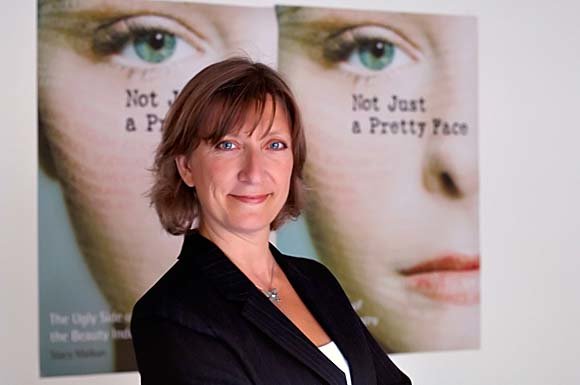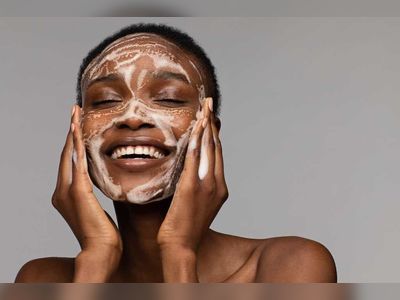Last weekend, a group of girls got together in Ross to have a very different kind of conversation about cosmetics: how to make them safer.
It was the third annual National Summit put together by Teens for Safe Cosmetics, a group founded in 2005 after headline-grabbing statistics showed that Marin County residents had higher rates of breast cancer than the national average. What began as an offshoot of Search for the Cause, a cancer awareness group, has grown to about 1,000 members with chapters in the Bay Area and New York.
Since its formation, the group has produced award-winning videos and lobbied for the California Safe Cosmetics Act, which took effect in January 2007. It requires cosmetic companies that sell products in California to label ingredients that are on state or federal lists of chemicals that may cause reproductive harm or cancer. Last March, the group held a "Miss Treatment" beauty pageant in Santa Monica that called attention to the use of potentially harmful ingredients by one of the largest makers of nail polish.
"When I realized I couldn't even pronounce the ingredients in these (beauty) products, I became really scared," said Kate Smith, a sophomore at San Domenico Upper School in San Anselmo. "When I joined the group, I would learn new facts and share them with my mom and my friends. I felt empowered sharing my knowledge."
Smith, 15, was one of 160 attendees at the two-day event, which included authors, experts and discussion panels designed to increase consumer awareness about product ingredients.
"I realized I use 25 products a day, not necessarily cosmetics, but I do wash my face and take a shower," said Jessica Assaf, a senior at the Branson School in Ross and winner of a 2006 Brower Youth Environmental Award for a video she made about what goes into shampoos and other products. "It is about boys and girls, and it is not just about makeup."
Brooke Sommerfeldt, with the San Francisco Department of the Environment, mentors the group. She said that when teens learn about how some brands are made and marketed, their rebellious instincts kick in.
"They don't like the idea of being pushed around, so do-it-yourself products and education are a good fit for them," she said.
Alice Zhao, a junior at Galileo High School in San Francisco, agrees. As part of a makeover project she organized last year, she emphasized the effectiveness - and economic appeal - of homemade treatments.
"You can make your own facials out of milk and oatmeal and save money," she said.
But Stacy Malkan, co-founder of the nonprofit Campaign for Safe Cosmetics, and author of "Not Just a Pretty Face: The Ugly Side of the Beauty Industry" (New Society, 2007), said she understands the allure of cosmetics and remembers being entranced with them as an adolescent.
"The drugstore cosmetics aisle was my comfort zone. With each measured purchase, I was one step closer to that girl I dreamed of: the confident, lovable version of me," she said. Malkan estimates that before getting on the school bus every day, she used 20 products containing 200 chemicals, 85 of which her research has identified as toxins. Malkan said she continues to be frustrated by the regulatory system and by companies that refuse to change their formulations.
On the scientific front, Charlotte Brody, executive director of Commonweal, a health and environmental research institute in Bolinas, and Renee Sharp, of the Environmental Working Group, joined with Tracey Woodruff, director of reproductive health and the environment at UCSF, to discuss the dangers of phthalates - a common ingredient in nail polish and fragrance. Phthalates (pronounced THAY-lates) act like fake estrogen, they said, leading to potentially higher risks of breast cancer in women - particularly if exposure occurs during the years of puberty, when the chemicals can affect rapidly developing breast tissue. There are also ongoing studies about the effects of phthalates on male reproductive systems, and whether manicures during pregnancy can have a lasting effect on a fetuses.
While there are small local and national companies committed to formulating safe, healthy cosmetics, many major companies have resisted changing their products for the American market.
But there's no need to throw out everything you've been using over fear that it is harmful, said Lynda Fassa, founder of an organic children's clothing company called Green Babies and author of "Green Babies, Sage Moms," (NAL-Penguin, 2008).
"Use what you have, and when you really need to replace it, make sure it is green," she said.
By the end of the weekend summit, the group had a plan for 2008: Continue working with lawmakers to ban lead in lipstick as well as phthalates, and create a manual to help others start chapters of Teens for Safe Cosmetics in their communities and online.
Though the goals are broad, Mark Schapiro, author of "Exposed: The Toxic Chemistry of Everyday Products and What's at Stake for American Power" (Chelsea Green, 2007), told the group it has the power to achieve them.
"The cosmetics industry is 10 times more scared of teens (than adult purchasers)," he said. "They can't arrest you if you show up at the front door of L'Oreal, and they can't call you a bunch of crazy environmentalists. You are their future customers. You are a fountain of enormous energy for change."
Carly Wertheim, a junior at Redwood High School in Larkspur, said that is what continues to inspire her.
"I am amazed at the impact on someone's life I can have," said Wertheim, who gives talks on the subject at local schools. "They changed what they use; they changed their lifestyle because of what I said."
Makeup gets a makeover
To learn more about Teens for Safe Cosmetics and its forthcoming events, including Turning Green - a Lifestyle on April 26 in San Francisco, visit www.teensforsafecosmetics.org. The event will include a green spa and a runway show featuring eco-friendly fashions and beauty products for teens. Want to model or design an outfit for the event? The group is seeking models and teen clothing designers. Boys and girls ages 14 to 18 are encouraged to apply. Download an application from the Web site. For more information, visit the Web site, call (415) 289-1001 or e-mail info@teensforsafecosmetics.org. Deadline for applications is Feb. 29.
For more information on Search for the Cause, visit www.searchforthecause.org.











